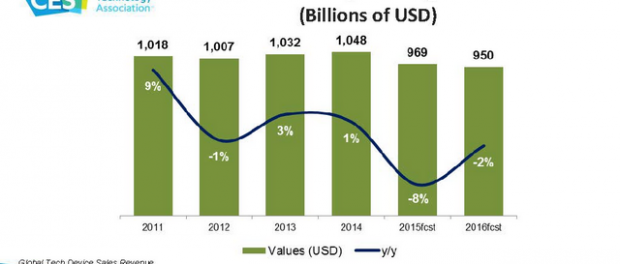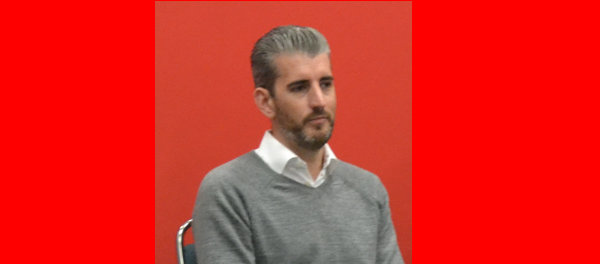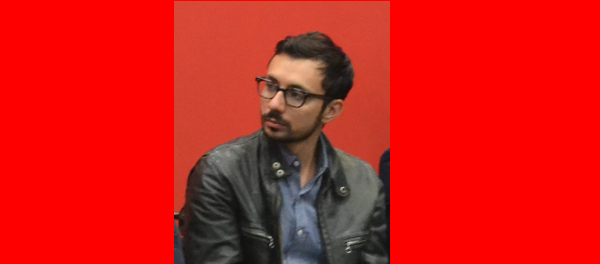
by Lidia Paulinska | Jun 14, 2016
GTC, May 2016 – Jen-Hsun Huang, the founder and CEO of Nvidia, one of the largest American manufacture of graphics accelerator chips, at the GPU conference, in May 2016 in California, announced that VR is going to change the way we design and experience the products. Such as shopping for cars. It is like being in virtual showroom where we can walk around our custom design car, open its door and check out the car’s interior.
At that conference took place two amazing virtual reality demos – Everest VR and Mars 2030.
For the “Everest VR” demo, Nvidia, partnered with Solfar, a Nordic VR games company, and RVX, a Nordic visual effects studio for the motion picture industry. RVX worked on movies, such as “Gravity”, which won the Oscar for Visual Effects. Using advanced stereo photogrammetry, pixel by pixel, a CGI (Computer Generated Image) model of Mount Everest was created.
For “Mars 2030” Nvidia worked with the scientists and engineers at NASA, along with Fusin VR, taking images from dozens of satellite flybys of Mars. They reconstructed 8 square kilometers of the surface of the planet. Even the rocks were hand sculptured, with millions of them being carefully placed, based on the satellite images.
Steve Wozniak, a co-founder of Apple, was invited to experience the Mars 2030 demo. As soon he slipped on his headset he was transported to a rover to drive around the planet.
Here are the key moments in VR history.
It started in 1939 at the trade show in New York City where introduced View-Master, a stereoscopic alternative to panoramic postcard. After that 30 years passed while Ivan Sutherland came up with first head-mounted display called “The Sword of Diamocles”. It passed another 30 years when the computer games company Sega introduced wrap-around VR glasses at CES in 1993. Two years later Nintendo produced the gaming console and named it Virtual Boy.
The real gold rush for virtual reality started in 2010.
That year Google came out with 360 degree version of Street View on Google Maps. In 2012 small company Oculus collected $2.4 million for a production of VR glasses. Two years after, Oculus was purchased by Mark Zuckerberg, the founder of Facebook, for $2 billion! The market research analysts from Deloitte, CCS Insight, Barclays and Digi-Capital accordingly forecast that $24 million of VR devices will be sold by 2018, and revenue from virtual and augmented reality products and content will reach to the $150 billion mark.
So far, virtual reality is associated with gaming industry sector mostly because the hard-core gaming community is willing to spend large amount of money for special purpose hardware such as VR glasses and games consoles. But that is changing. VR is appearing in different sectors of business and entertainment.
Yes, it is known that VR may cause motion sickness for some viewers and there are still a number of obstacles to work on but the technology is unstoppable now.

by Lidia Paulinska | Jan 27, 2016
January, CES 2016 – At the press event on January 4, Steve Koenig, Senior Director, Market Research presented Technology World Tour. Every year GfK and CTA announced Global Consumer Technology Spending Forecasts based on statistics from more than 340,000 retail stores in 80 countries. The analysis consider the geographical and financial aspects in electronics industry with separate numbers for mature (North America, Western Europe and developed APAC) and developing (Central/Eastern Europe, latin America, Emerging APAC, Middle East/Africa) markets.
How the Global Market 2016 looks like? Are Global technology spending on track?


Steve Koenig mentioned few reasons responsible for declining spending: Strong Dollar, that is unfavorable to conversion of global currencies; ASPs trending lower in categories with big impact such as smartphones (-7%), TV (-2%) and laptops (-4%); Global unit growth is moderate or negative in key sectors such as TV (1%), smartphones (8%), laptops (-3%) and tablets (-8%); Economic weakness in several emerging markets such as Latin America and Central/Eastern Europe; finally the China slowdown, the country is transitioning to consumption/services that has spillover effect on commodity dependent economies.
In the Global Tech Industry the new/nascent categories are playing bigger role in global growth. They are Smart Home, Virtual and Augmented Reality (VR/AR), Drones, 3D Printing, Digital Health Devices, Automotive and Robotics.
Steve Koenig, who like to refer the 7 best tech categories (tablets, laptops, cellphones, TV, smartphones, desktops and cameras) as Magnificent Seven presented their strength for 2016 versus the last year. It seems like they are losing their impact. In 2015 their revenue share was 79%, reaching $761 billion. It 2016 it is 78% and $740 million accordingly.

According to Koenig, the Global Sales by Product similar like in 2014 and 2015, remains mixed in 2016.


by Lidia Paulinska | Nov 28, 2015
The two-day KTech – KGlobal@Silicon Valley 2015 symposium and expo organized by the Korean Ministry of Science, ICT & Future Planning along with KOTRA Silicon Valley; was dedicated to promote Korean technology and its ties with Silicon Valley. The event took place on November 12-13, 2015 at Marriott hotel in Santa Clara, CA. The opening remarks were delivered by Yong Soo Kim, Assistant Minister of Science, ICT and Future Planning, ChangYup Na, Managing Director of KOTRA in Sillicon Valley, Jong-Lok Yoon, President of National IT Industry Promotion Agency, Congressman Mike Honda from 17th District of California and Dongman Han and Consul General of Republic of Korea in San Francisco.
The main theme of this year event was “Automated Future: Human + Technology”.
The first keynote speaker Curtis Sasaki, Vice President of Ecosystems and IoT General Manager from Samsung Electronics stated that in 2020 many of our devices will be connected. Sasaki who worked in the past at Apple and Sun Microsystems, and today at Samsung, the most recognizable brand from Korea, described some effort and the products that company offers: Samsung Sleepsense, the sleep monitor, Samsung Gear S2, stylish and smart watch, and Samsung gear VR. According Sasaki, next area where we should expect a lot of traffic is VR (Virtual Reality). And VR is not just for a gaming but may also conquer other territories such as real estate, where surprisingly, people are willing to buy a house without visiting it or in education where the technology can offer the VR tour of the world in every school. Samsung applied the VR in their smartphones, like the Galaxy 5, and just headphones are needed to get a VR experience. In his summary, Sasaki pointed out the challenges that society faces nowadays and summarized the solutions: IoT can be a catalyst, partnerships are critical, technology and innovation are moving at an even faster pace than in the past.
A world experienced wide robotics revolution – stated second keynote speaker Rodney Brooks, Founder, Chairman and CTO of Rethink Robotics – sustaining growth in the face of demographic inversion. Brooks is convinced that time for the robots to interact with humans in the daily life is now. As he described it: It knows what you mean and it does what you want. Radical rethinking of manufacturing strategies is underway. The time is now because of convergence of Industrial Internet (Intelligent devices networked into intelligent systems), Additive manufacturing (Changing the economics of scale), Near-shoring (Benefit of low-cost outsourcing is eroding), Digital revolution (Cheap sensing, cheap computation, pervasive connectivity). As the population enjoys long life expectancy the robotics is going to get pulled into in home for elder care and find it use in the aging population. Brooks showed the statistics from Europe, 1950 when the population reaches 349.8 million and life longevity was 80, in Europe 2050 the population will be 401 million with life longevity to the late 90. The speaker reminded the audience that the first commercial robot was developed was in a GM factory in New Jersey in 1961. Today robotics represents baxter, research robot; the product of robust and growing developer community sharing code and applications, uses the Unified RobotDesriptor Format (URDF) for collaboration across groups, uses open source ROS framework, the standard in academia and corporate research, complete robotics platform with low-level control for custom application development, interface for custom end-effector development.
The keynote speakers set the mood for a vibrant Automated Future: Human + Technology panel discussions over the next two –days of KTech symposium. Meanwhile more than 35 Korean companies in security, wearables, big data, e-learning, hardware and software were presenting their solutions for the world at the expo area along with international job fair at the Marriott hotel in Santa Clara.
Photos of the event can be found at: https://brightblueii.com/photos/ktechsilicon-valley-2015/
More information at the website: http://www.ktechsv.org/

by Lidia Paulinska | Sep 1, 2015
August 2015, Siggraph – Chris Edwards is the Founder and CEO of The Third Floor, the world’s leading pre-visualization studio services up to 40 major studio feature films each year. He is also Co-Founder/CEO of The VR Company. In addition to the two companies, he has extended his qualifications into the content area. Over the last 10 years he has been building a massive database of 3D assets, and servicing the world’s top Directors. He began his career in digital cinematography at Disney Studio and then he worked for George Lucas at Skywalker Ranch. His credits include Marvel franchises like Avengers and X-Men, the new Godzilla and Gravity.
“In the previsualization studio, we are working in real time to create scenes ahead of production, so a director can try one and have other options to choose from” said Edwards. . He explained that his company helps incubate concepts and package production for VR. The studio is experimenting with master layer imagery, which is combining CGI with live action photography for VR.
“Every time you go to see the Broadway play you feel like you are transformed by this amazing experience. We need to bring back that kind of language. Before we had cinema”, he continued, “we had a rectangle on the wall to display, dream, and still entertain us. That was called theater or play or some performance. It usually happened in front of the audience. The actors stayed sometimes on the front, or they go around. When you see Cirque du Soleil they come from above. The director uses all the tricks that work: sound design, blocking the characters and how they move around you, and lighting.”

by Lidia Paulinska | Sep 1, 2015
August 2015, Siggraph – David Karlak, a filmmaker based in Los Angeles, sees VR as an extension of the dreams that we have always had. He predicts that beyond VR, there will be additional technologies that will give us more immersive experiences. These experiences will include characteristics and senses from the physical world, such as smell. The opinion of the panel was that VR is not a necessity to be pushing innovation, but it is instead a wish fulfilling technology. For now, access to VR is not affordable to 99% of the world, but over time it will be more popularized and democratized.
Karlak has been exploring the confluence of virtual reality and science fiction cinema. He directed the short film “Candidate” that created a lot of buzz in the industry. Following this success, he raised funds on Kickstarter for his next project “Rise”, a film about a robot revolution in the future, told from the perspective of the robots. He sold the original story concept to Warner Brothers. Soon after sale of “Rise”, he sold a second original pitch titled “Outliers” to 20th Century Fox.
When he talked about VR he reminded the audience about the scene from “Reservoirs Dogs” by Quentin Tarantino. There was a scene in the film where all the characters were sitting on the table and the cameras was on a dolly which was rotating from one character to another. Having that camera calling out the characters in that moment is like having a camera on the table. “It actually make things simpler”, said Karlak . ”There is more emphasis on blocking of your actions in oppose to blocking of the camera. The camera in some ways disappeared leaving the viewer deeply immersed in the dialog and action of the scene.” He sees VR as alternative to Facebook or Instagram. People instead on spending time posting on social media, they will be “physically immersed” and connected in VR.








